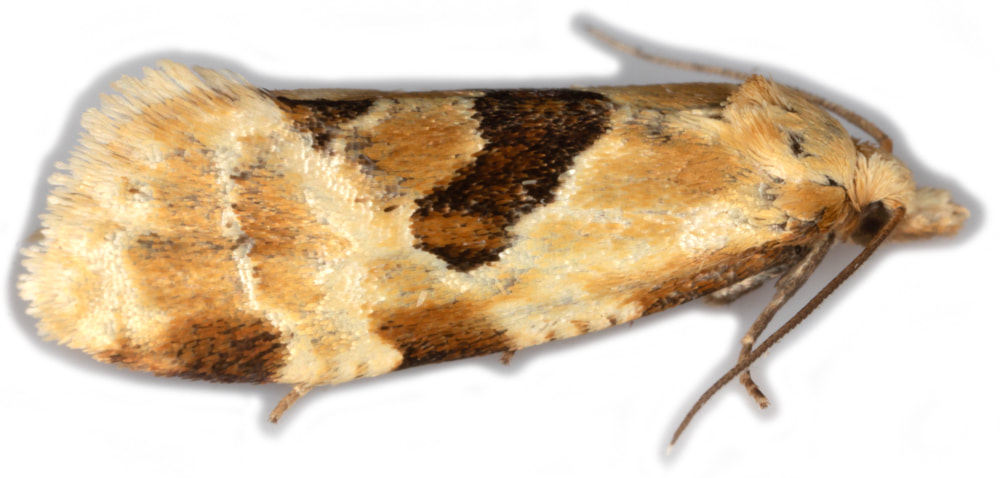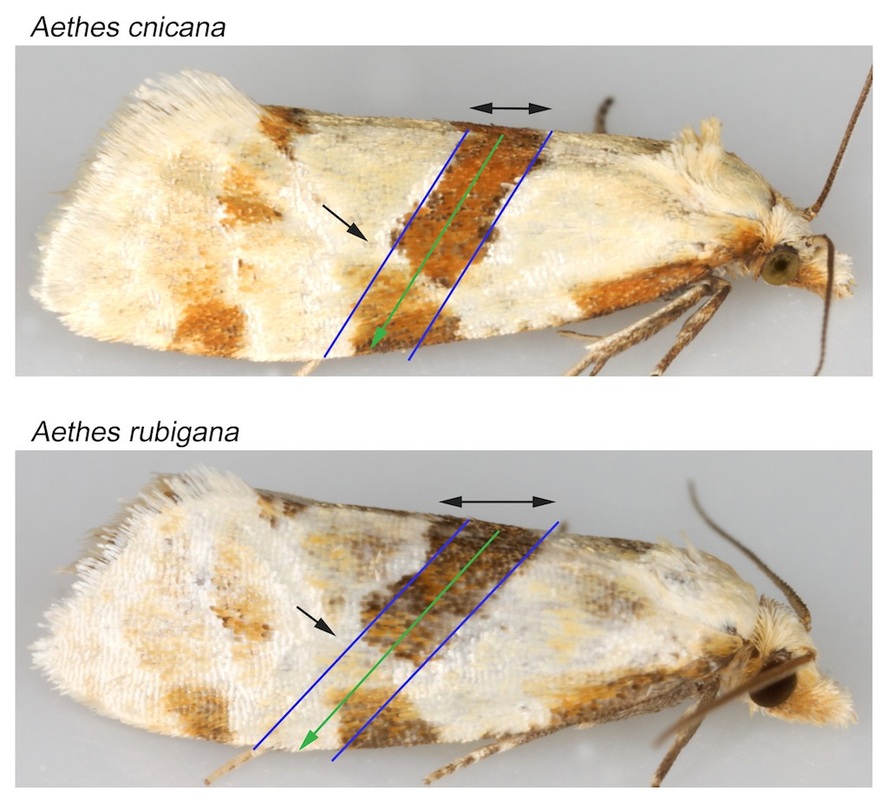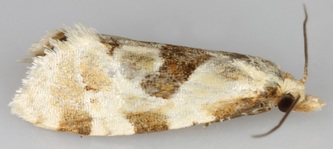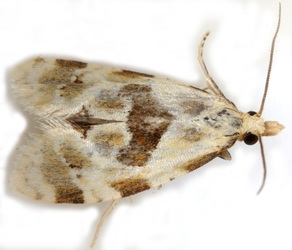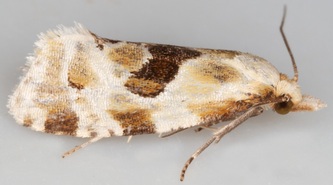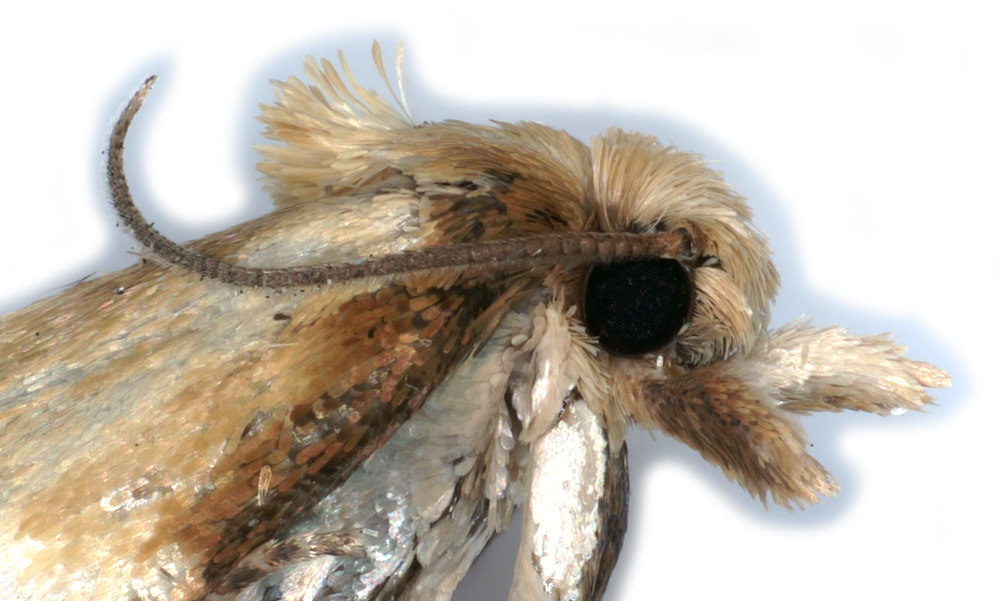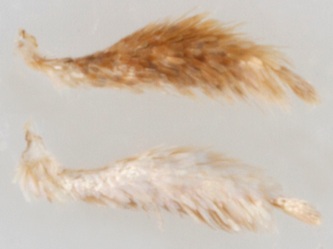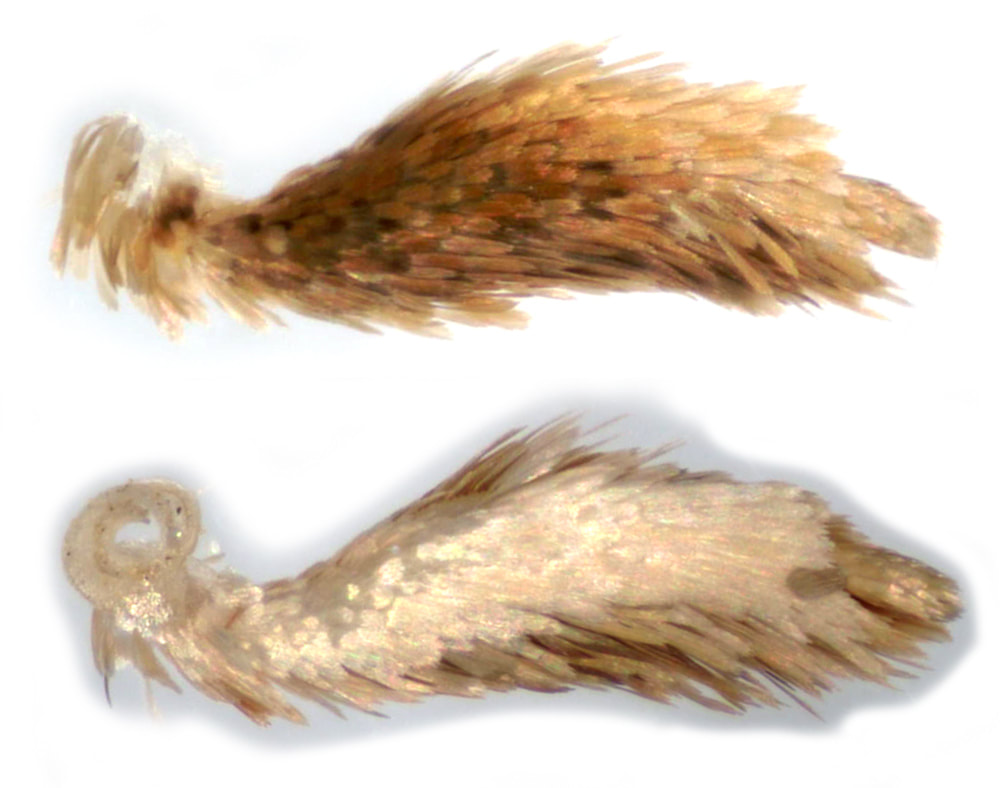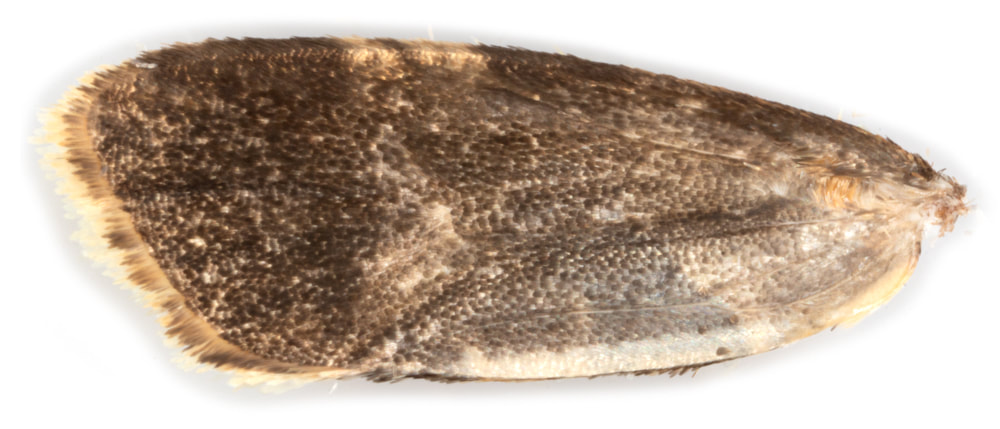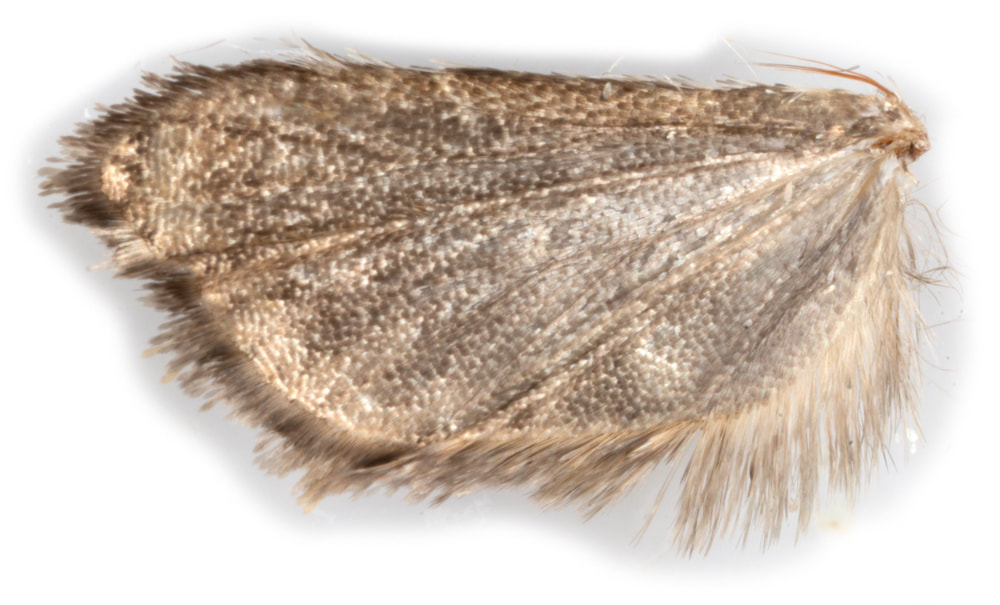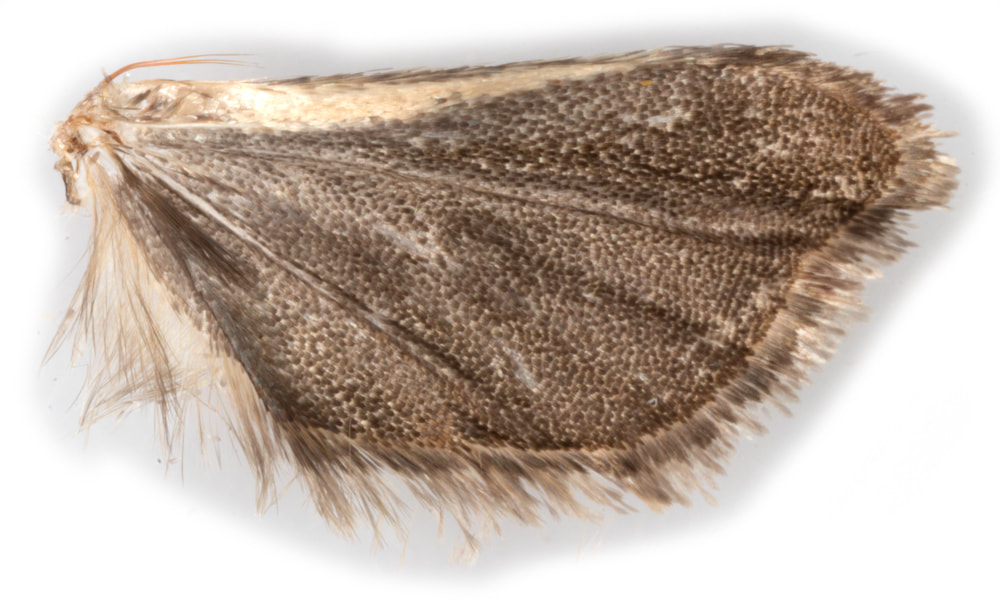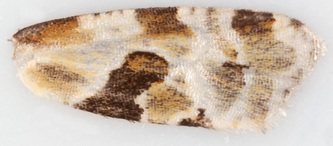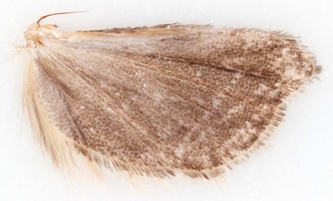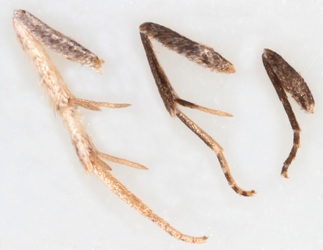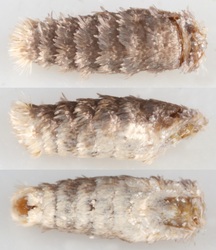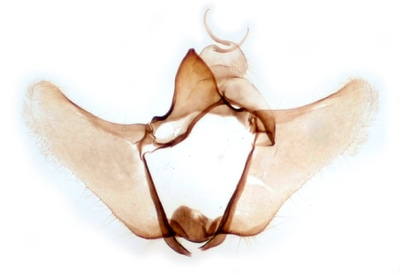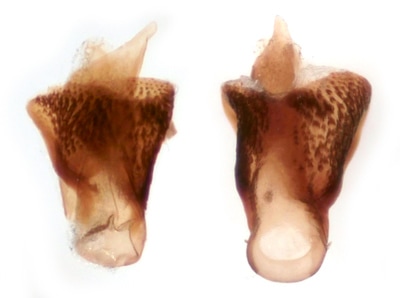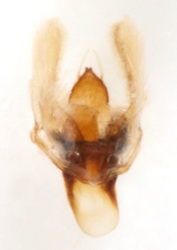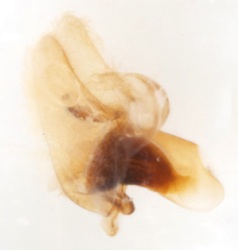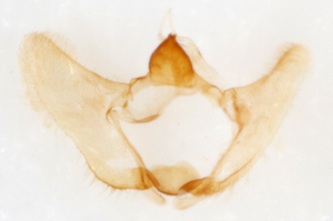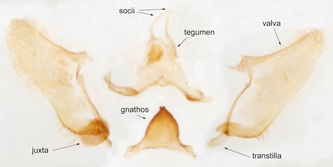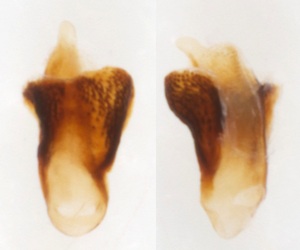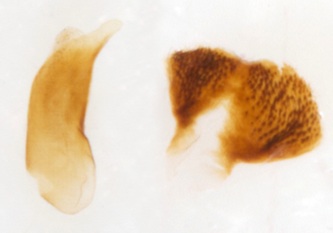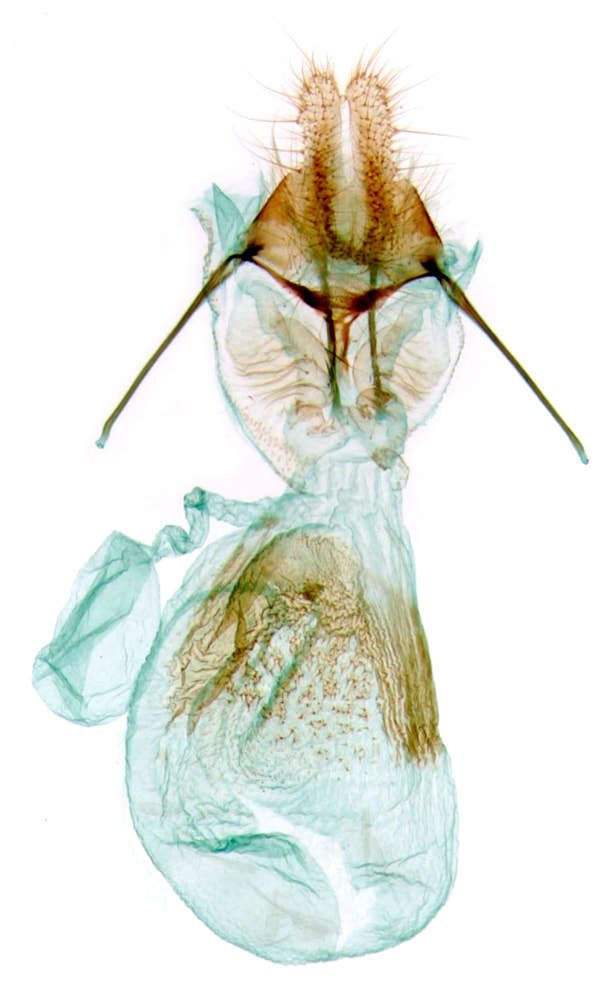|
TORTRICIDAE | Tortricinae | Cochylini
|
49.128 Aethes rubigana (Burdock Straw)
ws: 15-19mm; Jun-Aug; burdock (Arctium spp); locally common throughout GB
Synonym: Phalonia badiana (Pierce and Metcalfe)
Synonym: Phalonia badiana (Pierce and Metcalfe)
|
ID: Very similar to A.cnicana which averages smaller (ws:14-17mm) and has a slightly earlier flight season (Jun-Jul), however there is overlap for most of the size range and for most of the flight season.
They can be separated by the following features: 1. Colour of fascial markings: ferruginous in A.cnicana, dark brown in A.rubigana. (May not be reliable?) 2. Breadth of dorsal portion of median fascia: fairly constant without a dorsal expansion and relatively narrow in A.cnicana (median fascia occupies <1/5 of length of dorsum); expands at dorsum and relatively broad in A.rubigana (median fascia occupies >=1/5 of length of dorsum). 3. Angle of dorsal portion of median fascia: shallower in A.cnicana - a line drawn along the centre of the dorsal portion of the median fascia and extended to the costa cuts the costa near the distal end of the costal portion of the median fascia in A.cnicana and at some distance distal to this point in A.rubigana (see images opposite). 4. Interruption of median fascia at its angle between the dorsal and costal portions: not usually interrupted completely in A.cnicana, usually interrupted completely in A.rubigana. Norfolk Moths also gives the presence of a distinct sub-terminal blotch edged black along its dorsal edge and dark spots along the costa between the median fascia and proximal costal bar as being diagnostic of A.rubigana. The former seems unconvincing to me and the latter may be present in both species as far as I can see. |
Male genitalia: Comparing images in MBGBI5.1 (p206 figs 60,61) the most apparent difference between A.cnicana and A.rubigana occurs in the shape of the valva. The ventral margin comprises a short anterior portion and a long lateral portion, the two meeting at a rounded angle. The anterior portion is longer in A.rubigana than in A.cnicana (Moth Dissection refers to this by indicating a relatively broad base to the valva in A.rubigana). I have been unable to find a more absolute way of describing this difference (the lateral:anterior portion ratio is ~3 in both species). The base of the valva between its anterior and posterior attachments to the vinculum is also longer in A.rubigana than in A.cnicana, such that this distance is > the distance between the two posterior attachments in A.rubigana and <= this distance in A.cnicana. Pierce and Metcalfe gives: 'sacculus well-rounded' in A.cnicana and 'hardly rounded' in A.rubigana - I think this refers to the junction between the anterior and lateral portions of the ventral margin of the valva - and there is no difference in either the rounding or the angle between the two portions in the illustrations in MBGBI5.1; P&M also gives: socii longer in A.rubigana; transtilla broader in A.cnicana. The illustrations in MBGBI5.1 show a small cornutus in the aedeagus of A.cnicana but not in A.rubigana - Moth Dissection indicates that this cornutus is variable but leaves open the possibility that when it is present the species should be A.cnicana.
§1 Strumpshaw Fen, Norfolk; 23/07/2008; fw 7.4mm
§2 Ham Fen, Kent; 10/08/2010; fw 6.8mm
§3 Strumpshaw Fen, Norfolk; 27/07/2012; male; fw 7.1mm
§4 Strumpshaw Fen, Norfolk; 28/07/2012; male; fw 7.9mm
§5 Romansleigh, Devon; 28/06/2016; male; fw 7.4mm
§6 Bampton Grange, Cumbria; 30/07/2020; fw 8.6mm
All images © Chris Lewis
§2 Ham Fen, Kent; 10/08/2010; fw 6.8mm
§3 Strumpshaw Fen, Norfolk; 27/07/2012; male; fw 7.1mm
§4 Strumpshaw Fen, Norfolk; 28/07/2012; male; fw 7.9mm
§5 Romansleigh, Devon; 28/06/2016; male; fw 7.4mm
§6 Bampton Grange, Cumbria; 30/07/2020; fw 8.6mm
All images © Chris Lewis
Page published 24/04/2012 | §3 added 18/10/2012 | §4 added 01/11/2012 | §5 added 06/01/2017 | §6 added 01/02/2021
